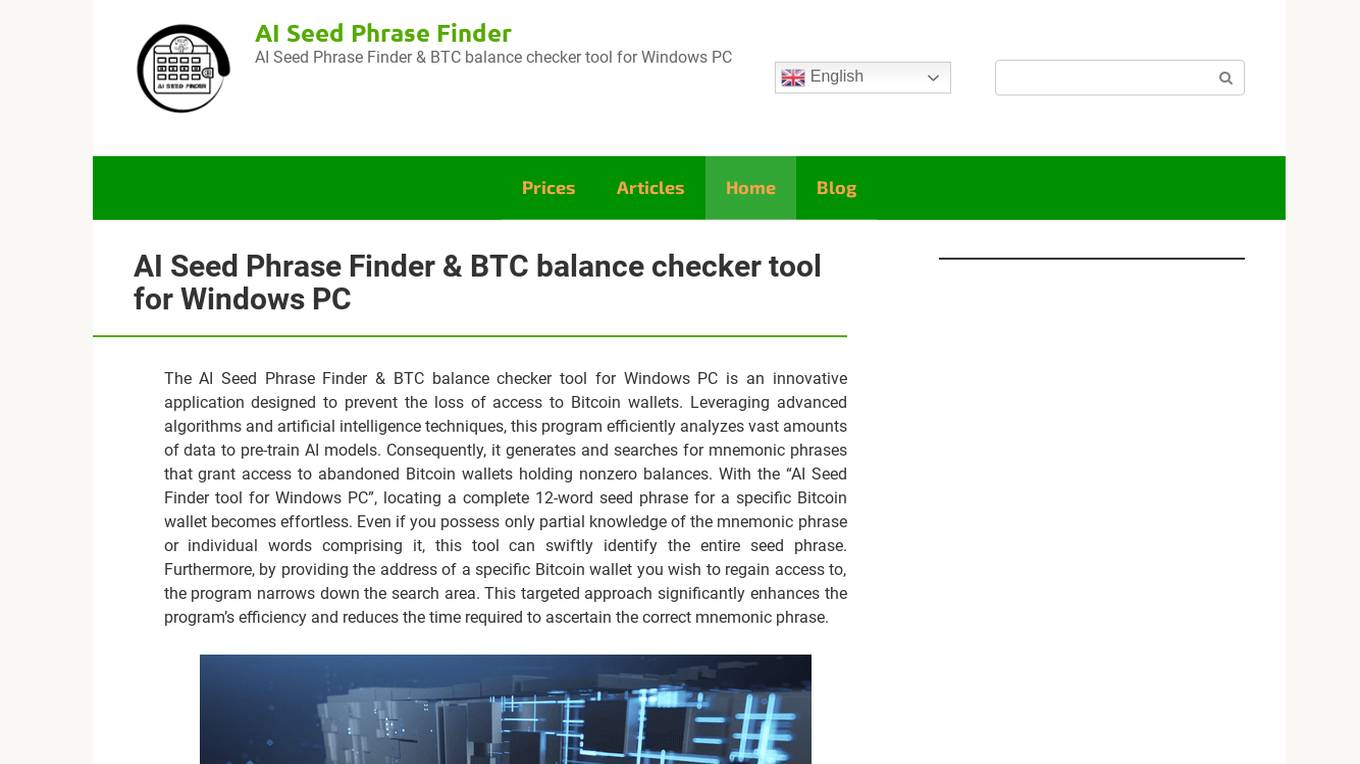Best AI tools for< Pretrain Models >
1 - AI tool Sites

AI Seed Phrase Finder & BTC balance checker tool for Windows PC
The AI Seed Phrase Finder & BTC balance checker tool for Windows PC is an innovative application designed to prevent the loss of access to Bitcoin wallets. Leveraging advanced algorithms and artificial intelligence techniques, this program efficiently analyzes vast amounts of data to pre-train AI models. Consequently, it generates and searches for mnemonic phrases that grant access to abandoned Bitcoin wallets holding nonzero balances. With the “AI Seed Finder tool for Windows PC”, locating a complete 12-word seed phrase for a specific Bitcoin wallet becomes effortless. Even if you possess only partial knowledge of the mnemonic phrase or individual words comprising it, this tool can swiftly identify the entire seed phrase. Furthermore, by providing the address of a specific Bitcoin wallet you wish to regain access to, the program narrows down the search area. This targeted approach significantly enhances the program’s efficiency and reduces the time required to ascertain the correct mnemonic phrase.
1 - Open Source AI Tools

HPT
Hyper-Pretrained Transformers (HPT) is a novel multimodal LLM framework from HyperGAI, trained for vision-language models capable of understanding both textual and visual inputs. The repository contains the open-source implementation of inference code to reproduce the evaluation results of HPT Air on different benchmarks. HPT has achieved competitive results with state-of-the-art models on various multimodal LLM benchmarks. It offers models like HPT 1.5 Air and HPT 1.0 Air, providing efficient solutions for vision-and-language tasks.